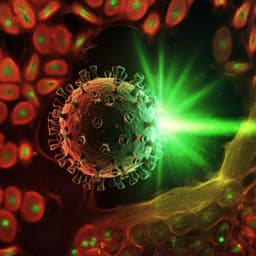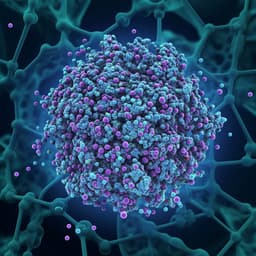
Medicine and Health
Engineering antiviral immune-like systems for autonomous virus detection and inhibition in mice
Y. Wang, Y. Xu, et al.
The COVID-19 pandemic has catalyzed breakthrough research by Yidan Wang and colleagues, introducing an innovative system of autonomous immune-like cells, known as ALICE, designed to combat viral infections. These engineered cells can detect viruses and deploy various antiviral agents, providing a promising strategy against diseases such as herpetic simplex keratitis in mice.
Playback language: English
Related Publications
Explore these studies to deepen your understanding of the subject.







